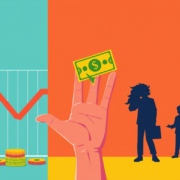China’s Manufacturing Sector Struggles: NBS PMI Reports Woes Amid Trade Talks and Economic Uncertainty
China’s Manufacturing Sector Faces Continued Challenges Amid US Trade Talks and Mixed Economic Signals
August 31, 2025 – China’s manufacturing sector shows strain as it handles trade tensions with the United States. New data from the National Bureau of Statistics shows a steady drop in factory work. This drop makes the future of the economy less clear for the third quarter and for Beijing’s GDP goals.
Manufacturing PMI Reflects Fifth Month of Contraction
On August 31, the National Bureau of Statistics set the Manufacturing Purchasing Managers’ Index at 49.4 in August. The index barely moved up from 49.3 in July. It stays below 50. This is the fifth month with a loss. The small change points to ongoing struggles in the industrial sector.
The Non-Manufacturing PMI, which covers services and construction, climbed from 50.1 to 50.3. This small rise shows that service work grows a bit. Analysts warn that weak consumer spending might stop a stronger overall growth.
Key Manufacturing Indicators Reflect Mixed Trends
• The New Export Orders Index moved up 0.1 point to 47.2. The score stays low. It shows weak demand from abroad.
• The New Orders Index reached 49.5 after a small rise. This value shows low orders at home.
• The Employment Index dropped to 47.9. Fewer workers are keeping pace.
• Prices for raw materials jumped 2.2 points to 53.3. This rise may cut profit margins.
Even with small gains, factories must cope with higher costs and weaker order numbers at home and abroad.
Consumer Weakness Clouds Growth Outlook
Retail sales grew 3.7% in July over last year. They were 4.8% in June. This change shows that consumer spending is slowing down. Unemployment climbed from 5% to 5.2% in July. Youth unemployment jumped from 14.5% to 17.8%. Many new graduates add to the job search. Beijing has called for more support for businesses to train and hire new workers.
Economists see a hard cycle. Lower selling prices force factories to cut costs. This cycle puts pressure on wages and lessens the money people have to spend. Alicia Garcia Herrero, Chief Economist for Asia Pacific at Natixis, said:
"It is China’s manufacturing workers who lose out while exports and growth do not stop. If you need to export at a loss, do not export. The data will not show Chinese workers as the main victims because they might face unpaid leave or reduced hours."
Trade Talks and Market Reactions
Trade talks between China and the United States start again as these numbers come out. China’s top trade negotiator, Li Chenggang, met with several U.S. agencies last week. He went over ideas from past deals. Market players watch these talks for any sign that tariff strain might ease and trade might pick up.
Some investors wait for Caixin’s Manufacturing and Services PMI next week. This report looks at smaller, private companies, especially in coastal areas. It adds a view to the state-based National Bureau of Statistics data.
Market indices show mixed moves. Mainland China’s CSI 300 rose by 2.71%. The Shanghai Composite Index grew by 0.84%. These gains come from hope over a possible trade deal and extra support steps. In contrast, Hong Kong’s Hang Seng Index fell 1.03%, hurt by low industrial profits and shifts in Federal Reserve ideas. The AUD/USD pair went up 0.71% during the week and closed at $0.65360 as risk mood got better.
Implications and Outlook
China’s steady drop in manufacturing and slow growth in services make its goal of a consumer-led economy with a 5% yearly GDP growth hard to reach. The mixed PMI numbers point to a need for new support measures to fight trade strain and weak domestic demand.
Market watchers will keep an eye on the next Caixin data, future trade discussions, and new policy moves. These steps will shape the mood in Chinese stock and currency markets in the near term.
—
Bob Mason
Financial Markets Analyst and Reporter
Published August 31, 2025
Full money-growing playbook here:
youtube.com/@the_money_grower









